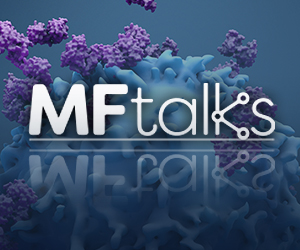touchFEATURE Recognizing mycosis fungoides, a heterogeneous and challenging cutaneous T-cell lymphoma
Watch this activity to learn more about mycosis fungoides cutaneous T-cell lymphoma (MF-CTCL) and a new MF-CTCL online resource.
Visit MF-Talks for more information.
MF-CTCL: Mechanism of disease
MF is a cutaneous T-cell lymphoma characterised by clonal proliferation of mutated, skin-homing T-cells
Video content supplied by Helsinn Healthcare SA.
1/3 Next ChapterChallenges in diagnosing MF-CTCL
Diagnosing MF-CTCL in clinical practice is difficult and may take years because early MF lesions can appear to be similar to benign dermatosis
Video content supplied by Helsinn Healthcare SA.
2/3 Next ChapterMF-Talks: a new resource for MF-CTCL
MF-Talks is a website that aims to shed light on mycosis fungoides. It provides current and emerging information on this under-recognized cutaneous lymphoma, and includes sections dedicated to healthcare professionals.
Video content supplied by Helsinn Healthcare SA.
3/3 Leave FeedbackOverview & Learning Objectives
Overview
Mycosis fungoides (MF) is characterised by the proliferation of epidermic, cerebriform T-cells. This condition is distinguished by some key pathological and symptomatic features, that can be mistaken with signs of benign dermatosis. Thus, diagnosis is difficult to make and may take years.
MF-Talks is an online resource that aims to shed light on mycosis fungoides cutaneous T-cell lymphoma (MF-CTCL). It provides up-to-date information, lists of expert centres, patient associations and scientific societies dedicated to the disease, as well as news about upcoming congresses and events.
Visit MF-Talks to learn more.
Learning Objectives
After watching this activity, participants should be better able to:
- Understand the role of T-cells in MF-CTCL pathology
- Recognize that clinical signs and symptoms of MF-CTCL can be mistaken for benign dermatosis
- Appreciate the importance of correlating clinical and pathological findings in MF-CTCL diagnosis
- Understand that a new resource, MF-Talks, can provide further information on MF-CTCL
References
- Larocca C et al. Hematol Oncol Clin North Am. 2019;33(1):103-120.
- Jawed S et al. JAAD. 2014 Feb;70(2):205.e1-16; quiz 221-2.
- Wilcox RA. Am J Hematol. 2017;92(10):1085-1102.
- Vaidya T, Badri T. Mycosis Fungoides Stat Pearls. https://www.ncbi.nlm.nih.gov/books/NBK519572/ (accessed August 2021)
- Denis D et al. Cancer Manag Res. 2019;11:2241-51.
- Bagherani N, Smoller BR. An overview of cutaneous T cell lymphomas [version 1; peer review: 2 approved]. F1000Research 2016; 5(F1000 Faculty Rev):1882. Available at: https://f1000research.com/articles/5-1882 (accessed August 2021)
- García-Díaz N et al. Mycosis Fungoides and Sézary Syndrome: An Integrative Review of the Pathophysiology, Molecular Drivers, and Targeted Therapy. Cancers 2021;13:1931. Available at: www.mdpi.com/2072-6694/13/8/1931 (accessed August 2021)
- Anorim GM et al. An Bras Dermatol. 2018;93:546–52
- Geskin L et al. Dermatol Ther (Heidelb). 2021;11:1085-1106.
- Trautinger F et al. Eur J Cancer. 2017;77:57–74
- Ahn CS et al. Am J Dermatopathol. 2014;36:933–48
- MF-Talks. 2021. Available at www.mf-talks.com (accessed March 2022)

